30+ Sample Fire Risk Assessment
-
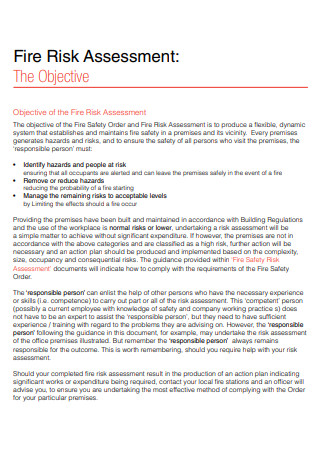
Fire Risk Assessment Template
download now -
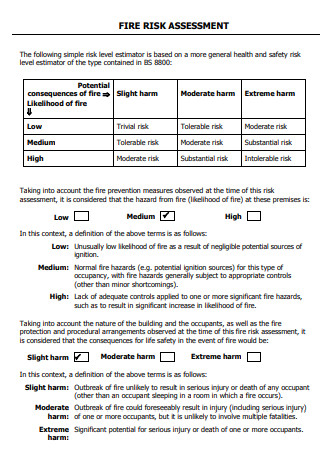
Basic Fire Risk Assessment
download now -
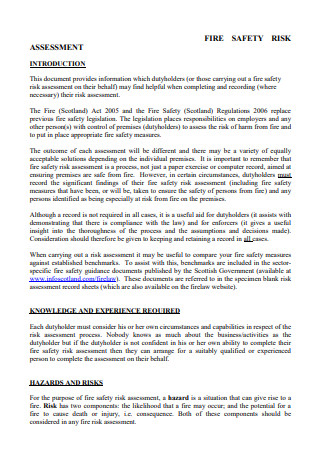
Fire Safety Risk Assessment
download now -
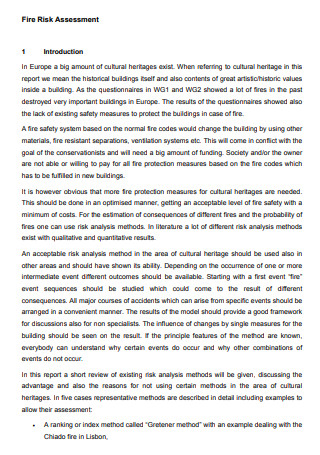
Sample Fire Risk Assessment
download now -
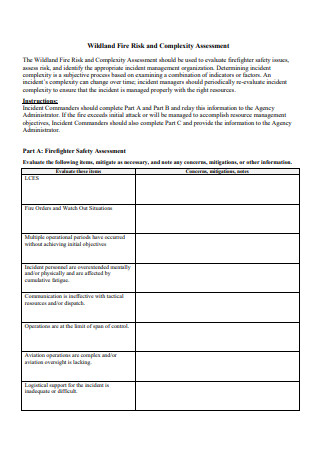
Wildland Fire Risk and Complexity Assessment
download now -

Personalized Home Fire Risk Assessment
download now -
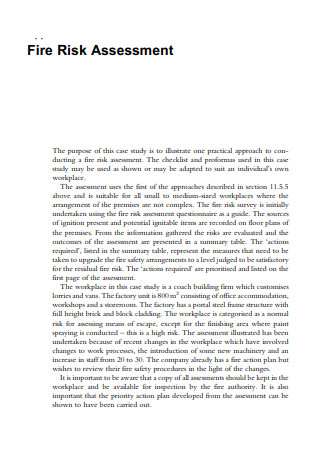
Fire Risk Assessment Example
download now -
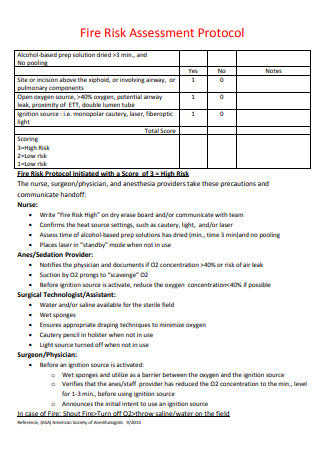
Fire Risk Assessment Protocol
download now -
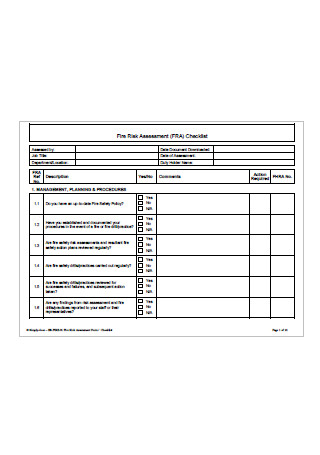
Fire Risk Assessment Checklist
download now -
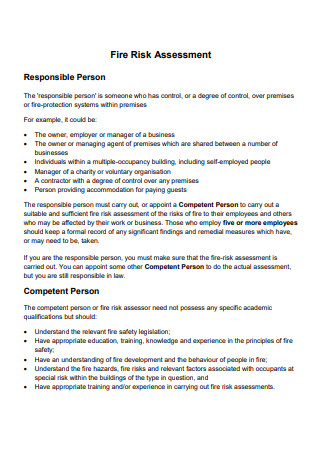
Simple Fire Risk Assessment
download now -
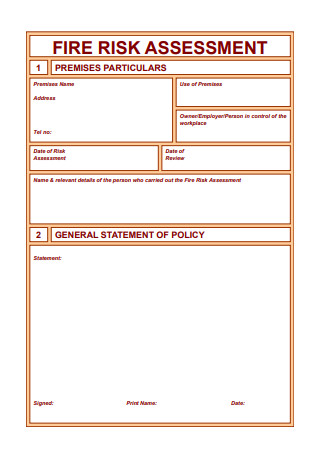
Fire Risk Assessment Format
download now -
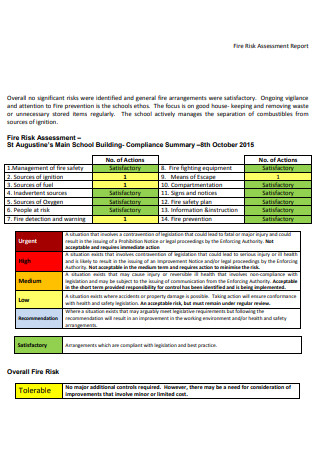
Fire Risk Assessment Report Template
download now -
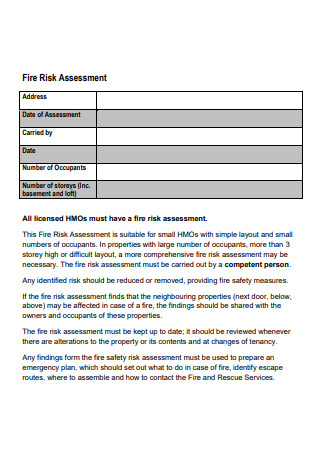
Fire Risk Assessment in PDF
download now -
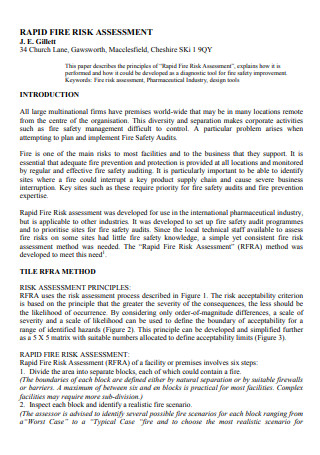
Rapid Fire Risk Assessment
download now -
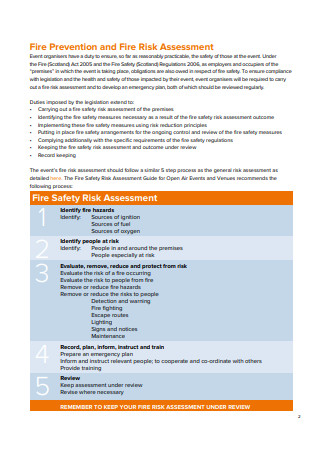
Fire Prevention and Fire Risk Assessment
download now -
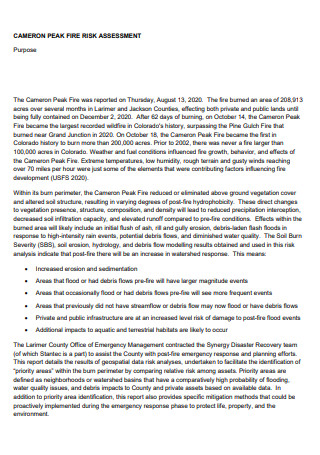
Peak Fire Risk Assessment
download now -
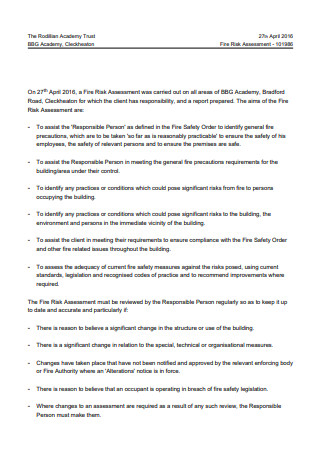
Draft Fire Risk Assessment
download now -
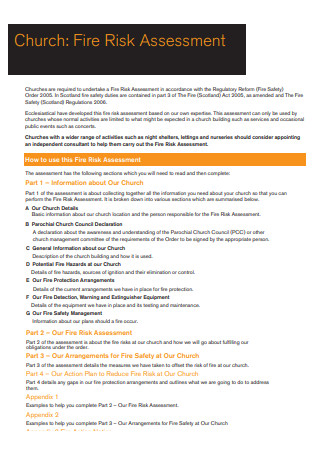
Church Fire Risk Assessment
download now -
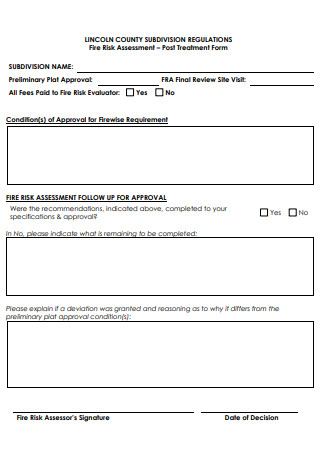
Fire Risk Assessment Post Treatment Form
download now -

Fire Risk Self Assessment
download now -
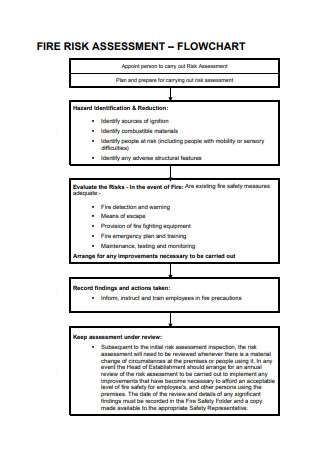
Fire Risk Assessment Flowchart
download now -
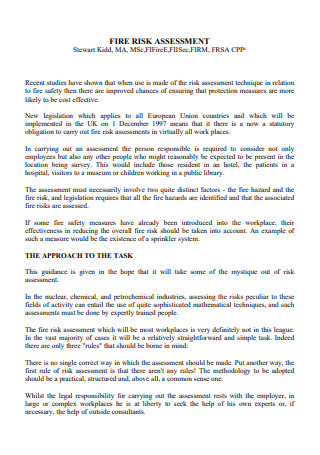
Standard Fire Risk Assessment
download now -
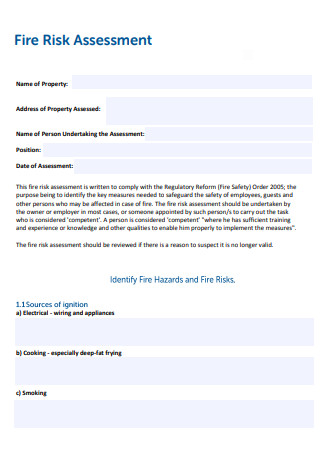
Printable Fire Risk Assessment
download now -
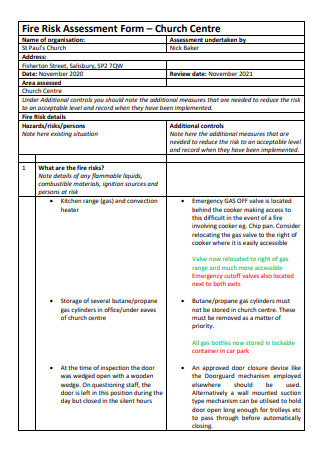
Church Centre Fire Risk Assessment Form
download now -
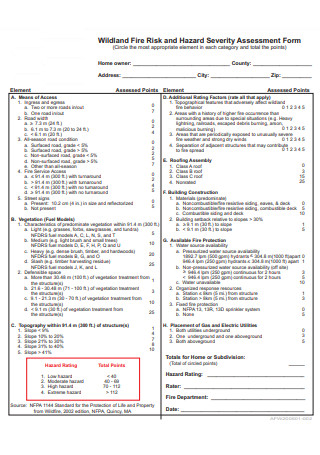
Wildland Fire Risk and Hazard Severity Assessment Form
download now -
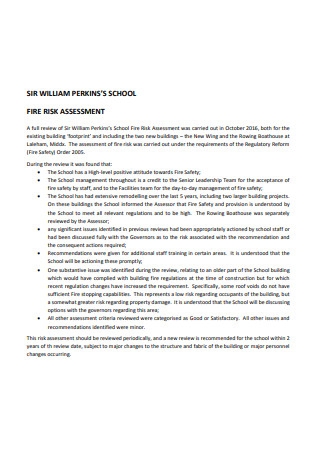
School Fire Risk Assessment
download now -
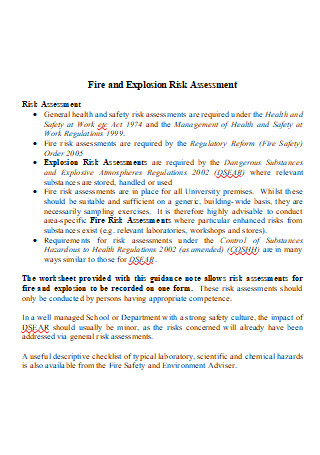
Fire and Explosion Risk Assessment
download now -
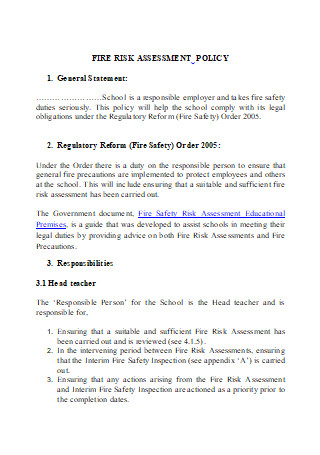
Fire Risk Assessment Policy
download now -
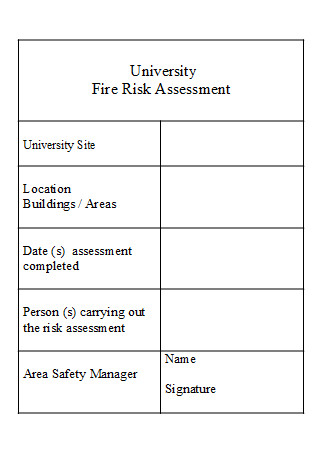
University Fire Risk Assessment
download now -
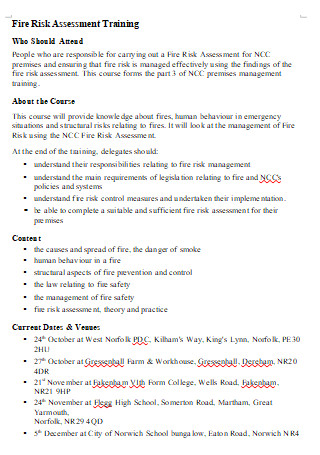
Fire Risk Assessment Training
download now -
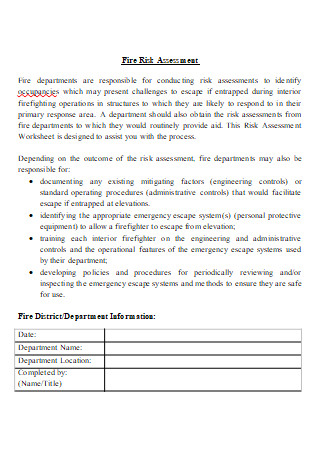
Fire Risk Assessment in DOC
download now
FREE Fire Risk Assessment s to Download
30+ Sample Fire Risk Assessment
What Is a Fire Risk Assessment?
Benefits of a Fire Risk Assessment
Safety Tips for the Workplace
How To Perform a Fire Risk Assessment
FAQs
What is the definition of a risk assessment checklist?
What are the five risk management principles?
What is the definition of basic fire safety in the home?
What Is a Fire Risk Assessment?
A fire risk assessment is a study of a structure to determine its fire risk and, if necessary, make recommendations to make the facility safer. If the building has fewer than five occupants regularly, the fire risk assessment does not have to be documented. Additionally, it is a systematic inspection of your workplace to determine any potential fire hazards and estimate the level of risk associated with those hazards. The objective is to eliminate or significantly reduce those hazards and risks. According to statistics, faulty appliances and leads were the cause of 25% of accidental fires in non-dwellings. Overloaded circuits, faulty craftsmanship, and a lack of maintenance are all common causes. To avoid such fires, get your electrical systems checked by a professional regularly.
Benefits of a Fire Risk Assessment
Assessments of risks are an essential part of fire safety. An assessment can help you protect your property while also potentially saving lives. Although assessments are required by law, they also have several other advantages. Continue reading to discover the benefits of a fire risk assessment.
Safety Tips for the Workplace
When it comes to workplace fire safety, far too many business owners believe that “it won’t happen to me.” However, fire safety is an essential aspect of risk management that must be taken seriously. A fire may be disastrous for a business, putting employees and members of the public in danger, destroying expensive equipment, and tarnishing your brand’s name. In addition, most workplaces will have a variety of fire hazards. So, what can you do to make your workplace more fire-safe? Here are six suggestions for preventing fires.
Maintain a Clean and Orderly Workplace
Untidy workplaces have more health and safety risks than clean and tidy workplaces, with many of these risks relating to fire safety. The “fire load” of an area or building increases as more junk accumulates around it. More items in the workplace can catch fire and fuel it. Cluttered places can also make it difficult to evacuate quickly, so keep corridors, stairs, and fire exits as straightforward as possible. Be sure that any waste is removed from the workplace before it can accumulate can also help reduce the risk of a fire. If destruction is allowed to collect and take up space in workplaces, it can be harmful. It can obstruct fire exits, and flammable material, such as cardboard can contribute to the area’s fire load.
Make sure that you have all of the necessary fire safety equipment.
Fire safety devices can help to lessen the chances of a fire breaking out. If a fire breaks out in the workplace, the proper equipment can inform employees and the general public and possibly extinguish the fire before it spreads out of control. Smoke alarms, fire exit signs and illumination, fire escape ladders if necessary, and fire prevention systems such as fire extinguishers and sprinklers should all be installed in your workplace.
Conduct in-depth risk assessments
You can’t adequately protect yourself from fire if you don’t understand the hazards in your workplace and the risks they pose. So, before you start putting a fire safety checklist in place, conduct a complete risk assessment of your business. Risk assessments are a legal necessity for firms with more than five employees, but they’re also critical for protecting your company from harm. Fire hazards should be identified in risk assessments – what may cause a fire to start? They should next assess the level of danger, consider who might be affected, and determine how fire hazards can be reduced. Then you can put in place control mechanisms that are proportional to the level of risk. It’s critical to review and maybe change risk assessments frequently to maintain long-term fire safety in the workplace.
Ensure that all employees have received fire safety training.
Employees must be trained on fire safety for their control methods to be effective. They must know what to do if a fire breaks out, from raising the alarm to evacuating the site or building. A poor scenario might worsen if employees aren’t prepared for or knowledgeable of fire safety practices. On the other hand, staff will know what to do if there is a fire in the workplace. They have received the appropriate employee development and training and have gained practical experience during fire drills. They can guide people out of the building or area in a safe manner, following the measures described in your risk assessment.
How To Perform a Fire Risk Assessment
A fire risk assessment form will aid you in remembering what you should look for while conducting your risk assessment. Refer to the contents as you move through the building and fill in the blanks as you go. It’s best to go through each room one by one and mark them off, including corridors, stairwells, and, most crucially, all escape routes. Remember that your risk assessment must include the following five steps:
Step 1: Determine the potential for a fire.
This is the first phase, which entails identifying anything on your home that could provide a fire hazard. Because fires start when heat comes into touch with fuel and oxygen, it’s essential to think about how a fire can start in your environment and what might burn after that. For example, electrical devices, such as heaters and computers, might be a source of ignition, and any textiles or paper near them could considerably aggravate a fire.
Step 2: Determine who is at risk.
Your company must determine how it will protect susceptible employees from fire threats in the workplace. Individuals with limited mobility, for example, may require access ramps, while those with hearing impairments may require a particular type of fire alarm or pager.
Step 3: Assess, eliminate, or minimize the hazards.
After completing stages one and two, you must thoroughly review the data reports, analyze the dangers of your area and the people at risk. After that, consider ways to eliminate or drastically lessen the fire dangers you’ve discovered. This includes taking safety steps such as clearing garbage mounds, doing PAT testing, and arranging for the establishment of a fire alarm system and fire extinguishers.
Step 4: Observe, prepare, and practice.
If your company has many employees or a license, you must keep a documented record of your fire risk assessment, including fire dangers and mitigation methods. Following that, you must develop clear, comprehensive plans for what would happen in the event of a fire, including evacuation routes, and ensure that everyone is aware of and educated correctly in these procedures.
Step 5: Review
Finally, your fire risk assessment should be evaluated regularly, with records updated as needed. In addition, if any substantial changes are discovered, you should reevaluate your risk assessment and fire evacuation procedures, informing and retraining workers as required. Your fire risk assessment template will primarily be used to assist you in completing the first and second phases, but it will also help you in completing the remaining steps. It allows you to determine where safety precautions are required and keep a physical record of your findings. Furthermore, when you go back to review and amend your evaluation, you’ll be able to refer to your documents.
FAQs
What is the definition of a risk assessment checklist?
When prepared to do a risk assessment, use a risk assessment annual checklist to verify you’ve assessed every aspect of your firm. With a task checklist, you can be sure you’ve addressed risk from every angle and have all the data you need to establish a risk management strategy for your firm.
What are the five risk management principles?
Risk identification, risk analysis, risk control, risk financing, and risk management are five fundamental risk management principles applied to almost any situation or problem. One is unaware that these principles are used repeatedly in daily life until examples are brought to light.
What is the definition of basic fire safety in the home?
Never leave a cooking pot or any other open flame unattended, including candles or oil burners. Each time you use your clothes dryer, clean the lint filter. Never smoke in bed, and exercise caution if drinking alcohol while smoking. When using electric blankets, or open fires in the winter, exercise extra caution to prevent unpredictable disasters.
Accidents, particularly fire disasters, can strike anyone at any time. It’s dangerously unpredictable but fortunately avoidable. By conducting a complete and thorough fire risk assessment, flaws and discrepancies that could lead to a fire accident, jeopardizing the building’s safety, can be identified. The relevance of this assessment can safeguard and avert dangers that are not foreseen. A fire accident will drain you more than a fire risk assessment will. You’ll be taking a significant step toward winning your client’s trust, respect, and protecting the sensitive data you’ve been entrusted with if you can effectively bring together the parties required for a thorough risk assessment and account for all of the dangers to your data.
